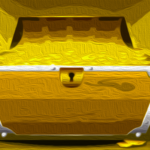
Introduction
The first deputy managing director of the International Monetary Fund (IMF) has recently issued a warning regarding the potential emergence of Cold War II. Drawing parallels between the historical Cold War between the U.S. and the Soviet Union, the IMF official emphasized that the current geopolitical landscape is characterized by tensions between the U.S. and China. This article will delve into the IMF official's concerns and shed light on the potential consequences of a new Cold War.
The Turning Point
During her speech at the 20th World Congress of the International Economic Association in Colombia, IMF's first managing deputy director, Gita Gopinath, expressed her belief that the world is at a turning point. She discussed the notion of whether we are on the brink of Cold War II, referencing historian Niall Ferguson's argument that it may have already begun. Gopinath then proceeded to analyze the similarities and differences between the Cold War era and the present day.
Increased Economic Interdependence
One significant difference highlighted by the IMF official is the higher degree of economic interdependence among countries in the present era. With economies more integrated into the global marketplace and connected through complex global value chains, the level of global trade to GDP has risen to 60 percent, compared to 24 percent during the Cold War. This increased economic interdependence, as Gopinath points out, could raise the costs of fragmentation.
Uncertainty and Allegiances
Another crucial distinction lies in the uncertainty surrounding the blocs with which countries may align themselves. Unlike the Cold War era, there are now greater swings in political ideology within countries, making it difficult to determine their allegiances. This uncertainty further adds to the costs of fragmentation. Gopinath emphasizes that policymakers must not lose sight of the gains from open trade and advocates strongly for a multilateral rules-based trading system and the institutions that support it.
The Emergence of Fault Lines
While the IMF official acknowledges that there are currently no widespread signs of retreat from globalization, she warns that fault lines are starting to emerge, leading to geoeconomic fragmentation. This fragmentation poses a serious risk of plunging the world into a new Cold War. Gopinath cautions that if this fragmentation deepens, the consequences could be severe, with an annihilation of the gains achieved through open trade. It is crucial to recognize that a fragmented world is ill-equipped to tackle the common challenges faced by nations today.
Economic Costs and Implications
The potential economic costs of Cold War II are significant. In an increasingly integrated world, a fragmented global landscape would impede progress and hinder collective efforts to address global challenges. Emerging and developing countries, in particular, stand to lose the most in such a scenario. While some countries may initially benefit from fragmentation, the overall impact of a full-blown Cold War would be detrimental to all.
Conclusion
The warning issued by the IMF official regarding the possibility of Cold War II serves as a reminder of the importance of maintaining a multilateral rules-based trading system. It is crucial for policymakers to advocate strongly for open trade and the institutions that support it. The costs of a fragmented world are too high, and it is in everyone's best interest to work towards a more integrated and cooperative global landscape.
Frequently Asked Questions
What's the advantage of a Gold IRA?
Many benefits come with a gold IRA. It can be used to diversify portfolios and is an investment vehicle. You can control how much money is deposited into each account as well as when it's withdrawn.
You also have the option to roll over funds from other retirement accounts into a gold IRA. This makes for an easy transition if you decide to retire early.
The best part is that you don't need special skills to invest in gold IRAs. They are readily available at most banks and brokerages. You do not need to worry about fees and penalties when you withdraw money.
There are also drawbacks. The volatility of gold has been a hallmark of its history. It is important to understand why you are investing in gold. Are you looking for safety or growth? Are you trying to find safety or growth? Only when you are clear about the facts will you be able take an informed decision.
You might want to buy more gold if you intend to keep your gold IRA for a long time. You won't need to buy more than one ounce of gold to cover all your needs. You may need several ounces, depending on what you intend to do with your precious gold.
If you're planning to sell off your gold, you don't necessarily need a large amount. You can even live with just one ounce. You won't be capable of buying anything else with these funds.
What does gold do as an investment?
The price of gold fluctuates based on supply and demand. Interest rates can also affect the gold price.
Due to their limited supply, gold prices fluctuate. You must also store physical gold somewhere to avoid the risk of it becoming stale.
How do I Withdraw from an IRA with Precious Metals?
First, you must decide if you wish to withdraw money from your IRA account. After that, you need to decide if you want to withdraw funds from an IRA account. Next, make sure you have enough money in order for you pay any fees or penalties.
An IRA is not the best option if you don't mind paying a penalty for early withdrawal. Instead, open a taxable brokerage. This option is also available if you are willing to pay taxes on the amount you withdraw.
Next, you need to determine how much money is going to be taken out from your IRA. This calculation is dependent on several factors like your age when you take the money out, how long you have had the account, and whether or not your plan to continue contributing.
Once you have determined the percentage of your total savings that you would like to convert to cash, you can then decide which type of IRA to use. Traditional IRAs allow for you to withdraw funds without tax when you turn 59 1/2. Roth IRAs, on the other hand, charge income taxes upfront but you can access your earnings later and pay no additional taxes.
After these calculations have been completed, you will need to open a brokerage bank account. Brokers often offer promotional offers and signup bonuses to encourage people into opening accounts. You can save money by opening an account with a debit card instead of a credit card to avoid paying unnecessary fees.
When it comes time to withdraw your precious metal IRA funds, you will need a safe location where you can keep your coins. Some storage facilities will accept bullion bars, others require you to buy individual coins. Before choosing one, consider the pros and disadvantages of each.
For example, storing bullion bars requires less space because you aren't dealing with individual coins. However, you'll need to count every coin individually. However, individual coins can be stored to make it easy to track their value.
Some prefer to store their coins in a vault. Others prefer to store them in a safe deposit box. Whichever method you choose, make sure you store your bullion safely so you can enjoy its benefits for years to come.
How does a Gold IRA account work?
People who wish to invest in precious metals can use Gold Ira accounts as a tax-free investment vehicle.
You can purchase physical gold bullion coins anytime. You don't have a retirement date to invest in gold.
Owning gold as an IRA has the advantage of allowing you to keep it forever. Your gold assets will not be subjected tax upon your death.
Your heirs can inherit your gold and avoid capital gains taxes. Your gold is not part of your estate and you don't have to include it in the final estate report.
To open a IRA for gold, you must first create an individual retirement plan (IRA). After you do this, you will be granted an IRA custodian. This company acts as an intermediary between you and IRS.
Your gold IRA Custodian will manage the paperwork and submit all necessary forms to IRS. This includes filing annual reports.
Once you've established your gold IRA, you'll be able to purchase gold bullion coins. The minimum deposit required for gold bullion coins purchase is $1,000 If you make more, however, you will get a higher interest rate.
When you withdraw your gold from your IRA, you'll pay taxes on it. If you are withdrawing your entire balance, you will owe income tax plus a 10% penalty.
If you only take out a very small percentage of your income, you may not need to pay tax. There are exceptions. However, there are exceptions. If you take 30% or more of your total IRA asset, you'll owe federal Income Taxes plus a 20% penalty.
It is best to not take out more than 50% annually of your total IRA assets. You'll be facing severe financial consequences if you do.
Statistics
- You can only purchase gold bars at least 99.5% purity. (forbes.com)
- This is a 15% margin that has shown no stable direction of growth but fluctuates seemingly at random. (smartasset.com)
- (Basically, if your GDP grows by 2%, you need miners to dig 2% more gold out of the ground every year to keep prices steady.) (smartasset.com)
- If you accidentally make an improper transaction, the IRS will disallow it and count it as a withdrawal, so you would owe income tax on the item's value and, if you are younger than 59 ½, an additional 10% early withdrawal penalty. (forbes.com)
- If you take distributions before hitting 59.5, you'll owe a 10% penalty on the amount withdrawn. (lendedu.com)

















